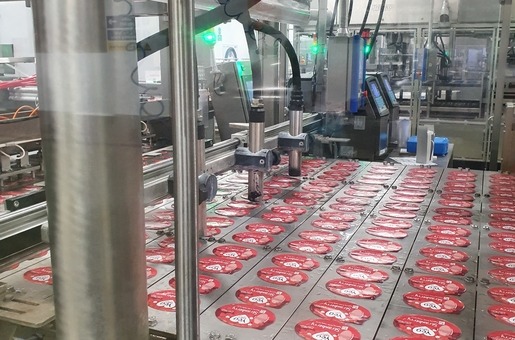SMOOTH AND CONSISTENT LINEAR MOTION FOR YOGHURT PRODUCER
The RARUK Automation linear axis system chosen by Somerset-based dairy company, Yeo Valley, to carry inkjet print heads across a conveyor-width of yoghurt pots has brought notable operational benefits. It has resulted in consistently high-quality printing of date codes, a factor that is all-important for any food processor dealing in the mass market. The system was showcased on the BBC’s documentary series Inside the Factory.
Linear motion is one of many IEF Werner automation solutions available from RARUK Automation and typically, this application also called on the company’s design and integration skills. Using elements from the IEF Werner Easyline range of modules, RARUK Automation designed and installed a complete package of equipment complete with programmed controller.
The Easyline axis is integrated into a yoghurt-packaging machine and used to transport the inkjet print heads across a conveyor carrying rows of pots. Each row holds up to sixteen pots and the conveyor indexes to the next row every two seconds to print the next line on the reverse stroke. Smooth operation and consistent speed are vital components in the efficiency of the inkjet printing process and thanks to its controlled acceleration and deceleration the servo motor controlled Easyline system ensures no disturbance to ink flow.


The flexible application of the IEF Werner linear motion product programme makes it a popular choice among systems integrators. It has been designed to provide elements that are freely combined to create bespoke, multi-axes handling systems. They offer high loading capacity, high rigidity, quiet operation and are complemented by a wide choice of motors and controllers.
IP65 rating qualifies the system for the wash down environment required by this dairy application and its controller enables a range of different products and print positions to be accommodated. The freely programmable controller has integrated I/O and fieldbus processing enabling it to control all x-y movements; it has the ability to run a maximum of 32 programmes in parallel.
Continuous, low-maintenance operation of the original system that dates back 2006, has since resulted in multiple further units being specified of which this installation is the latest.




